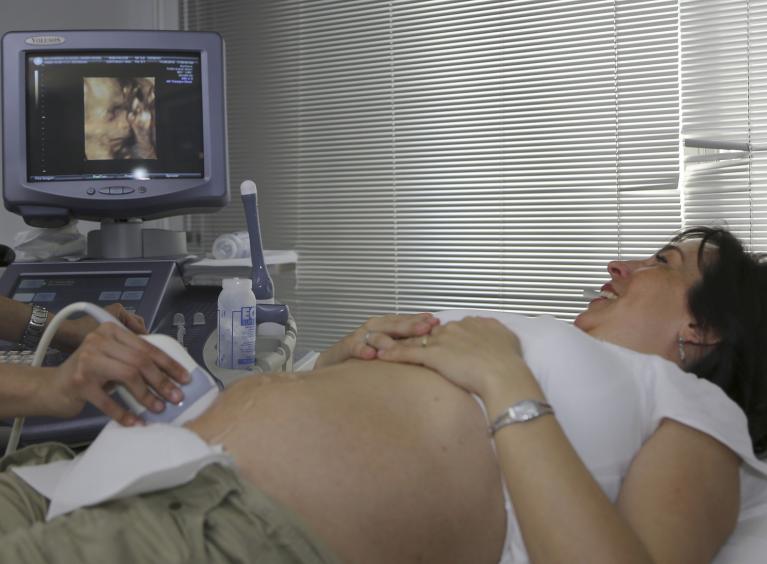Obstetrics and Gynaecology Ultrasound
An ultrasound scan is a procedure that uses high frequency sound waves to create images of organs and structures inside the body. An ultrasound scan can be used to monitor an unborn baby, diagnose a condition or guide a surgeon during certain procedures.

Obstetric Scanning
All pregnant women, non-binary people and trans men are routinely offered a dating scan (usually around 12 weeks) and an anomaly scan, around 20 weeks gestation.
Can I have a picture?
Yes - pictures can be purchased at most scan appointments. Please bring change to use in the machine – the current charge is £5 for one picture, and £10 for three. We will try and obtain a good picture, however, babies do move frequently and it is not always possible to see them clearly. Patients should ask the sonographer at the beginning of the examination if they are interested in having a picture.
Will I be able to find out the sex of my baby?
We cannot always tell the sex of a baby, but if patient’s wish to know, they should ask the sonographer. The sonographer will tell the patient if they can see clearly.
Can my partner, relative or friend accompany me?
We allow one person to accompany the patient during the examination. Any other adults (or children) may come in after the checks are complete, but patients should understand that the Sonographer needs to concentrate during the examination. We recommend that patients do not bring children alone, as we are unable to provide childcare; children must be supervised at all times.
Why are we sometimes unable to complete the scan on the same day?
Sometimes babies lie in awkward positions and it is not always possible to see everything clearly, so patients may be asked to return at a later date.
Get in touch
Call Medical Imaging on
01226 432550
Call about gynaecology appointments on
01226 432638
Call about obstetric appointments on
01226 431799
Gynaecological Scanning
A transvaginal (internal) scan is often required for further assessment of a patient’s pelvic organs. A probe is inserted into the vagina and is moved gently to obtain the views required. This is a safe procedure, but patients may experience some discomfort during the examination. Patients should speak to the sonographer if they have any concerns regarding the examination.
All patients undergoing a pelvic ultrasound scan will be invited to come into the scan room unaccompanied. Relatives and carers are welcome to remain in the waiting room. We recommend that patients do not bring children alone, as we are unable to provide childcare.
Following Pelvic Scans
Patients might be told the results of the scan soon after it has been performed. However, in most cases, the images will need to be analysed and a report will be sent to the doctor who referred the patient for the scan. The results will be discussed with the patient at their next appointment, if one has been arranged.
Preparation for the scan
Patients will be required to drink 1 litre of water, one hour before their appointment time. It is very important that patients do not empty their bladder before they attend. This preparation is essential as it allows us to obtain good views of the baby/pelvic area. Without this scans may have to be rebooked.
Patients should read their appointment letter very carefully. It will give the patient full instructions on how to prepare for the scan.
During the scan
Most ultrasound scans last between 10 and 45 minutes depending on the area to be examined.
Patients will be asked to lie on a couch and a sonographer will apply some gel onto the patient’s skin on the area to be examined. The gel allows the probe to slide easily over the patient’s skin and will help to produce clear images. The sonographer will hold the probe firmly against the patient’s skin and move it over the surface. Ultrasound is quite painless, but the sonographer will sometimes have to press quite hard on the patient’s abdomen to see clearly.
There are no known risks from the sound waves used during an ultrasound scan. Unlike some other scans, such as CT (computed tomography), ultrasound scans do not involve exposure to radiation.
